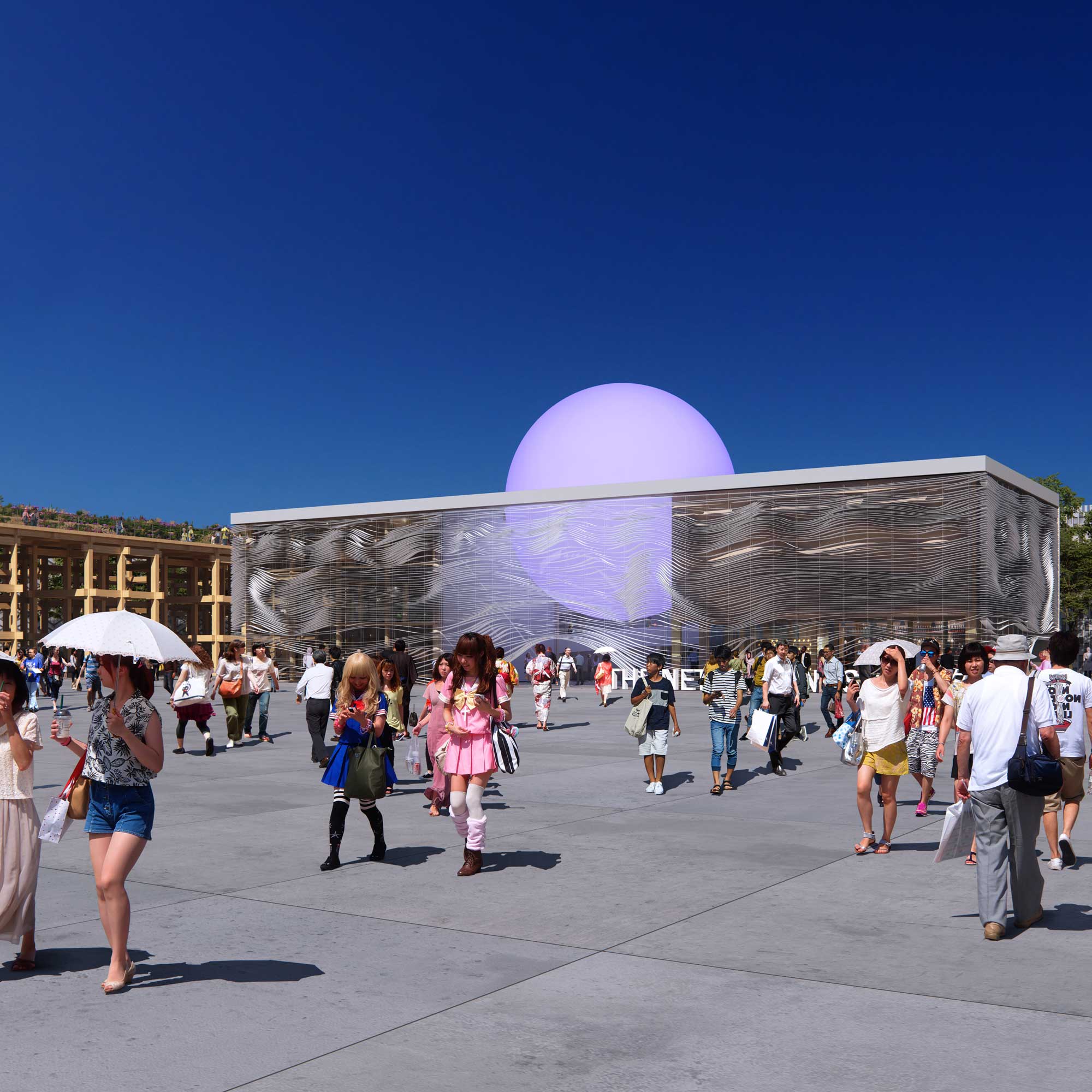The Netherlands Pavilion at World Expo Osaka 2025
Netherlands Ministry of Foreign Affairs, Netherlands Enterprise Agency (RVO)
The Netherlands Pavilion at Expo 2025 in Osaka, Japan highlights the nation’s commitment to innovation and collaboration for a more sustainable future.
Commissioned by the Ministry of Foreign Affairs of the Netherlands, the pavilion demonstrates how the country is transforming its relationship with water to harness it as a source of clean, renewable energy. As the lead experience designer, Tellart aims to inspire visitors through interactive technology and creative storytelling, showcasing how this harmonious relationship can fuel the energy transition.
The pavilion is realised by a consortium of RAU Architects, engineering consultancy DGMR, Osaka-based construction company Asanuma, and experience design studio Tellart.

Uniting on Common Ground for a sustainable future
The Netherlands Pavilion embodies the spirit of “Common ground" rooted in collaborative problem-solving with the recognition that no nation can tackle the world’s most pressing challenges alone. This approach dates back centuries, born from the necessity of protecting the Dutch lowlands from the constant threat of rising waters.
Each visitor will experience this collaborative spirit through the pavilion and its interactive and immersive spaces with a personal storytelling tool “orb” in their hand.

Journey through the Netherlands Pavilion
As visitors step into the pavilion, they’re greeted by a striking mural that immerses them in the heart of the Dutch concept of “common ground” and the Netherland’s relationship with water. This mural sets the stage for the guest experience.
Nearby, the Water Basin installation captures the flow of nature itself—transforming chaotic, unpredictable water patterns into calming, synchronized ripples. It also refers to the common ground mindset, telling a story of harmony through collaboration.


At the Water Walls, visitors are invited to interact with a dynamic mural that illuminates through the personal orb. This installation highlights how in the Netherlands, people collaborate with water, integrating it into their daily life.
Throughout history, the Dutch people have had an evolving relationship with water. At first, they fought to keep it out by building barriers and flood walls. Later, they began to embrace the water as part of the landscape, allowing it to flow freely and making space for rivers to flood naturally. Today, the Dutch partner with water as a source of clean energy and a catalyst for a sustainable future.
At the heart of the pavilion, a dome features an immersive AI generated full-dome cinematic experience with the story about how the Netherlands is redefining its historic connection with water to create sustainable forms of energy. Additionally, the immersive film offers a hopeful vision with a spoken word narrative in both English and Japanese based on common ground, for a sustainable future.


Interactive and inclusive storytelling
Towards the end of the experience, visitors will be invited to create a generative artwork at the Pledge Station in a physical and tangible way, by stepping into a shared space, a literal “common ground”.
The entire journey within the Netherlands Pavilion illustrates the Dutch approach to embracing diversity and collective action in tackling environmental issues and facing global challenges. Tellart’s integration of storytelling and spatial design ensures the experience resonates with visitors of all ages, including children with a new storyline with the world famous kids book character Miffy.
Curated by Tellart and selected together with the team at the Netherlands Ministry of Foreign Affairs and Netherlands Enterprise Agency , the last space, Energizing Tomorrow presents ten groundbreaking Dutch innovations that showcase how the Netherlands is shaping a sustainable future by collaborating with water and with nature at large. This series of interactive panels offer tangible and inspiring examples of how water and nature can be harnessed to drive creative solutions across sectors such as sustainable design, food security, renewable energy and future mobility.

Circularity at heart
The Netherlands Pavilion is designed by RAU Architects. At the heart of the pavilion features a prominent sphere symbolising a new era of unlimited clean energy, akin to a “man-made sun”. It represents a future powered by sustainable and regenerative resources.
Water, a core theme of the pavilion and a source of clean, abundant energy, is reflected in the flowing forms of the facade and roof. True to its values, the pavilion is fully circular—not only in design but also in material use and lifecycle planning. Every component of the building is identified, registered, and documented in a material passport on the Madaster platform. This ensures that all materials can be disassembled and reused, transforming the pavilion into a material depot and circular resource bank.
"Making clean, renewable energy accessible to everyone is the key to a sustainable society and a sustainable economy. ‘The Russian war in Ukraine has put energy security higher on many countries’ agendas. I’m proud of the Dutch design, which showcases the innovative solutions that the Netherlands has to offer and introduces visitors to the possibilities of a zero-emission future driven by circularity"
Liesje Schreinemacher, Minister for Foreign Trade and Development Cooperation
"We are honored to be debuting in Japan at Expo 2025, contributing to both the Netherlands and the Philippine pavilions. The Expo offers a global stage for innovation and creativity, and we’re excited to bring our vision to life, inspired by Japan’s cultural heritage and forward-thinking spirit."
Ries Straver, Executive Producer and Partner at Tellart
Project Data
Selected Press:
Credits:
Clients
Ministry of Foreign Affairs, Netherlands and Netherlands Enterprise Agency (RVO)
Consortium
Architecture: RAU Architects
Experience design: Tellart
Engineering: DGMR
Construction: Asanuma
Media
Media design: Tellart Productions
Sound design: Resonate
AI film: Return to Earth Studio
Graphic design: Kessels Kramer
Renders: Plomp
Fit-out and AV hardware supplier: BeWunder
Cultural consultancy: Studio the Future
Photography: Tellart & [to be determined]
Suppliers / Sponsors
Fixed furniture: Cooloo (sponsor)
Loose furniture: Het Anker (sponsor)
Curtain designer: Studio Mae Engelgeer
Traditional Japanese paper lanterns: Kojima Shoten Inc.